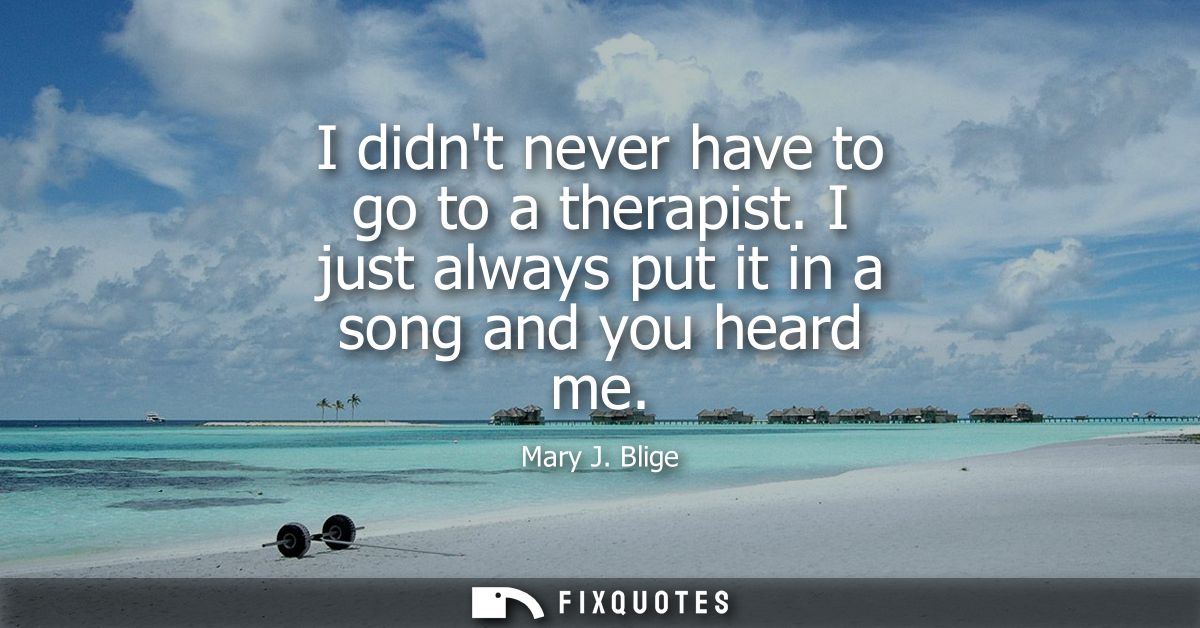"I didn't never have to go to a therapist. I just always put it in a song and you heard me"
About this Quote
Mary J. Blige’s words reveal the deeply cathartic power of music as both a personal refuge and public confession. She admits to channeling her inner struggles, pain, and complex emotions directly into her art, finding therapeutic release through songwriting instead of professional counseling. Rather than turning to therapy, a space typically reserved for confidentiality and introspection, she chose to confront and process her traumas through creative expression. Every lyric she wrote became her method of self-examination and healing.
By sharing her vulnerabilities with her audience, Blige creates an intimate bridge between her personal world and her listeners. Instead of conversations behind closed doors, her healing process unfolds in the open, inviting others to witness, and perhaps resonate with, her journey. Music becomes both shield and megaphone: it protects her by turning pain into beauty, and amplifies her story to those who may face similar battles. There is a generosity in her openness, she is not just singing her truth, but offering it as solace or inspiration to anyone who listens.
Her admission also hints at resilience and self-reliance. The reliance on her own craft implies a strength drawn from within, and an ability to transform hardship into artistic output. Yet, there is also vulnerability. Songwriting does not guarantee resolution; instead, it continually exposes her wounds for collective scrutiny and empathy. In bypassing traditional therapy, Blige places trust in both her audience and the healing power of melody, rhythm, and words.
Beyond personal catharsis, her approach underscores the larger cultural significance of music as therapy in itself for many people. Listeners, in hearing her songs, are both witnesses and participants, finding their own healing through recognition and shared emotional landscapes. Blige’s songs become communal spaces for emotional release, demonstrating how artistry can fill the void where formal support systems once stood.
About the Author

